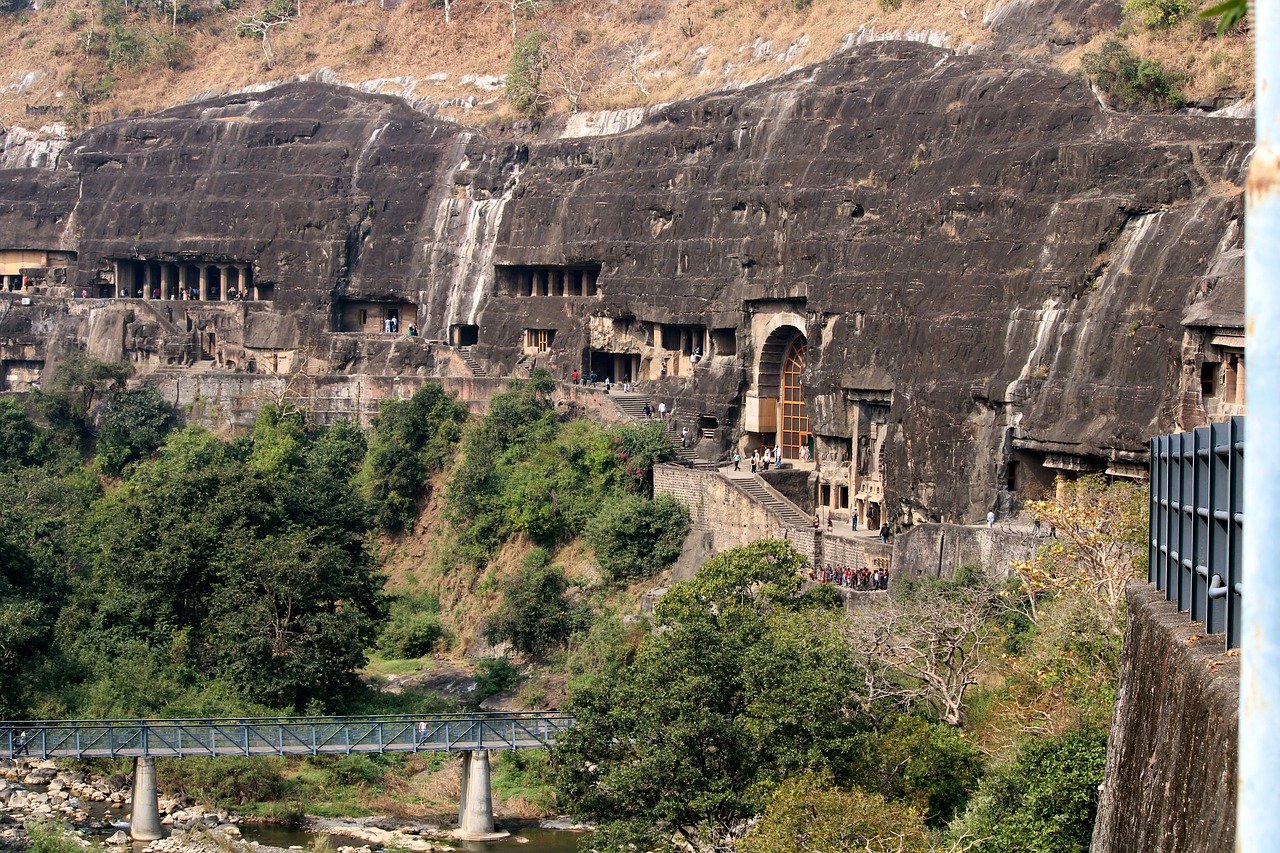Chronicles of Ajanta Caves from the 2nd century BCE to about 480 CE in Maharashtra.
A horseshoe-shaped group of rock-cut ancient temples, the Ajanta Caves, lies across the Wangorah River in Maharashtra’s Aurangabad district.
The Ajanta Caves, found by accident in 1819 by a British soldier, have been in the country’s archaeological and historical forefront ever since.
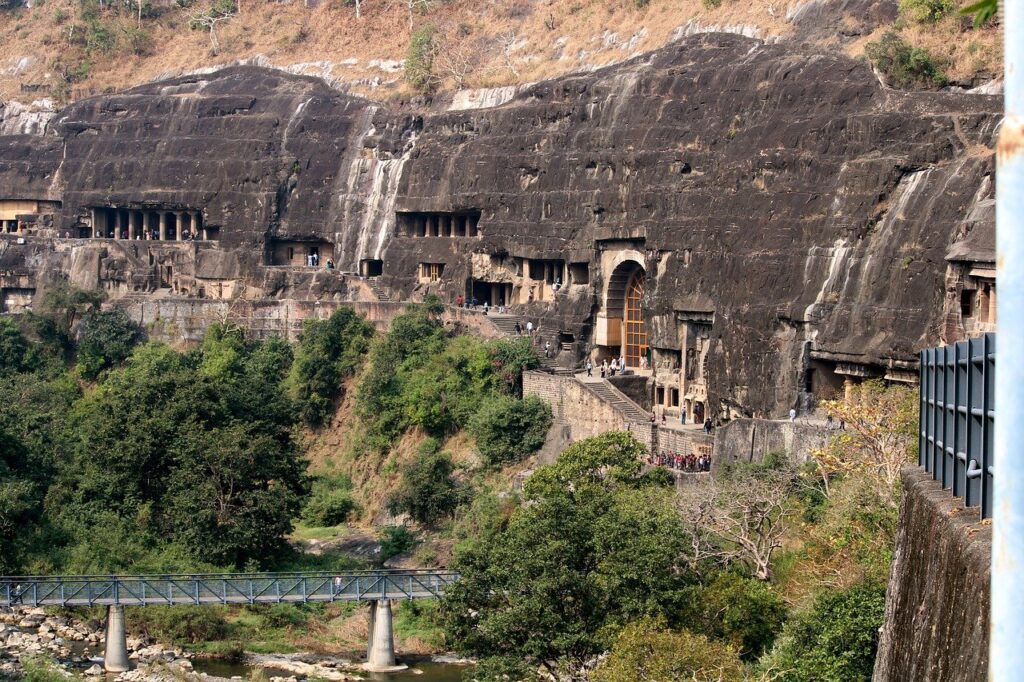
DISCRETION
This marvelous piece of craft, architecture, and solitude, unidentified for more than 1,000 years other than wild animals, bugs, flash floods, phenomenal flora, and maybe the local Bhil people, was forgotten by those who built it as long ago as AD 500.
It was listed as a UNESCO World Heritage Site in 1983.
The caves have been explored and examined by many researchers. Buddhist ideologies and traditions are filled with exquisite sculptures, carefully positioned designs, and paintings.
An integral part of the Ajanta Caves is the lifestyle of the monks and the specifics of the lives of Buddha and Buddhist tales.
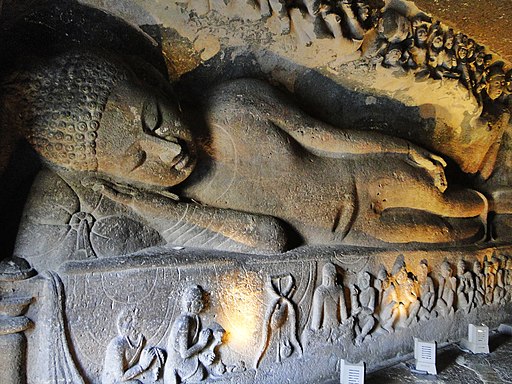
A total of 30 caves are found, and each one has been numbered. However the numbering is not chronological, and a suffix has been applied to some caves that were later found, such as 15A.
HISTORY
There is a rather fascinating story of the caves. In a series of two stages, the caves were built centuries apart from each other. The first collection belongs to the 1st century CE in the 2nd century BCE, while the second set of caves was constructed in the 5th century.
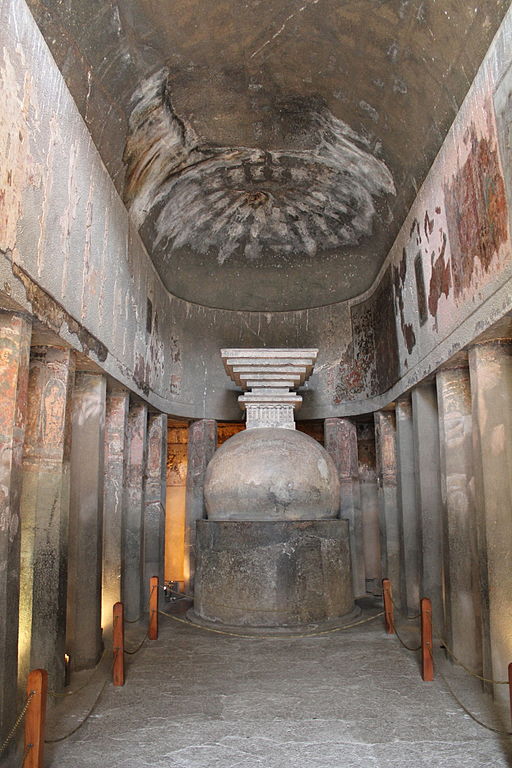
FIRST PERIOD CAVES:
The earliest built caves were numbered and few with a number succeeded by an alphabet, for example, Cave No. 9, and 15A. Many researchers and scholars believe that the caves of the Hinayana or Theravada group of Buddhism show a strong influence. There is still a debate as to know the exact construction time.
The construction time is estimated to be about 100 BCE to 100 CE by a team of researchers, including Walter Spink. This group of researchers believes that the caves were constructed under the Satavahana Dynasty’s jurisdiction. However, others claim the building era as back as the Mauryan Empire.
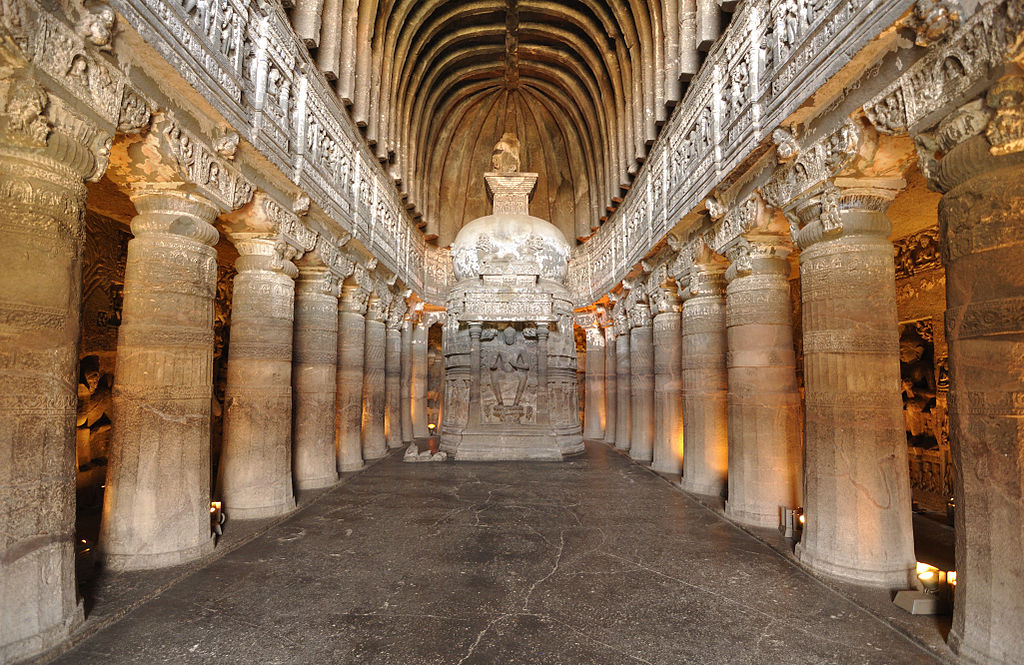
The main characteristic of the caves of the previous times is their emphasis on the design of the pagoda rather than on sculptures. Both caves 9 and 10 are stupa-based with the worship hall, and caves 12, 13, and 15A are based on the building style of the vihara (in which monks inhabit). Even in Buddhism, the Hinayana period did not serve Buddha as a Hindu Deity.
Buddha himself banned the painting and sculpting of his pictures, according to several records. In the later years, however, this changed as the Mahayana period of Buddhism began. The Hindu style of worship and monks strongly influenced the community to spread the message and teachings of Buddhism, succumbing to visual images of Buddha, his life, and stories.
SECOND PERIOD CAVES:
A large number of caves numbered 1-8, 11, and 14-29, were constructed between 400 CE and 500 CE during the Vakataka era under the supervision of Emperor Harishena.
It was accepted that the caves were constructed between the fourth and seventh hundreds of years more than quite a long while.
By then, Buddhism’s Mahayana sect, which loved and admired Buddha as a Deity, had emerged into portraiture. Therefore the caves of this century have Buddha’s life and tales sculpted and painted on the walls for the purpose of worship.
This period also began to accept women as missionaries, unlike the Hinayana tradition that excluded gratification, the form of Mahayana was open to the wishes of a man and a woman. These ideas were replicated by the paintings, sculptures, and works of art.

It is interesting to remember that not all caves are complete. The unfinished caves were abandoned after Harishena’s death, as per the study. Even though there is proof that perhaps the caves have been in usage, most likely by the monks who resided there, their numbers may have reduced with time.
According to Spink, for more than three centuries before the rule of Harishena, the caves of the first era were abandoned. The king commissioned the excavation of the new caves along with his Minister Varahadeva and Sub-King Upendragupta.
DISCOVERY
A British Born military officer, John Smith, was on a tiger search when he discovered the entrance of a cave high above the river Waghora (Tiger) which could just have been man-made.
Fumbling uphill with his team, Smith reached the cave and stumbled upon an incredible vaulted and sequences of column spaces, its walls canvassed in fading away art works. A eternal praying Buddha was facing a mound-like temple, or stupa, under a dome.
Smith engraved his name on a sculpture of a Bodhisattva, a figure speaking to one of the previous existences of the Buddha before he accomplished Nirvana. From that point forward, a large number of individuals have added their names as the Ajanta caves – a display of the most established and the absolute best of all Buddhist craftsmanship – has picked up popularity and became a convincing tourist spot.
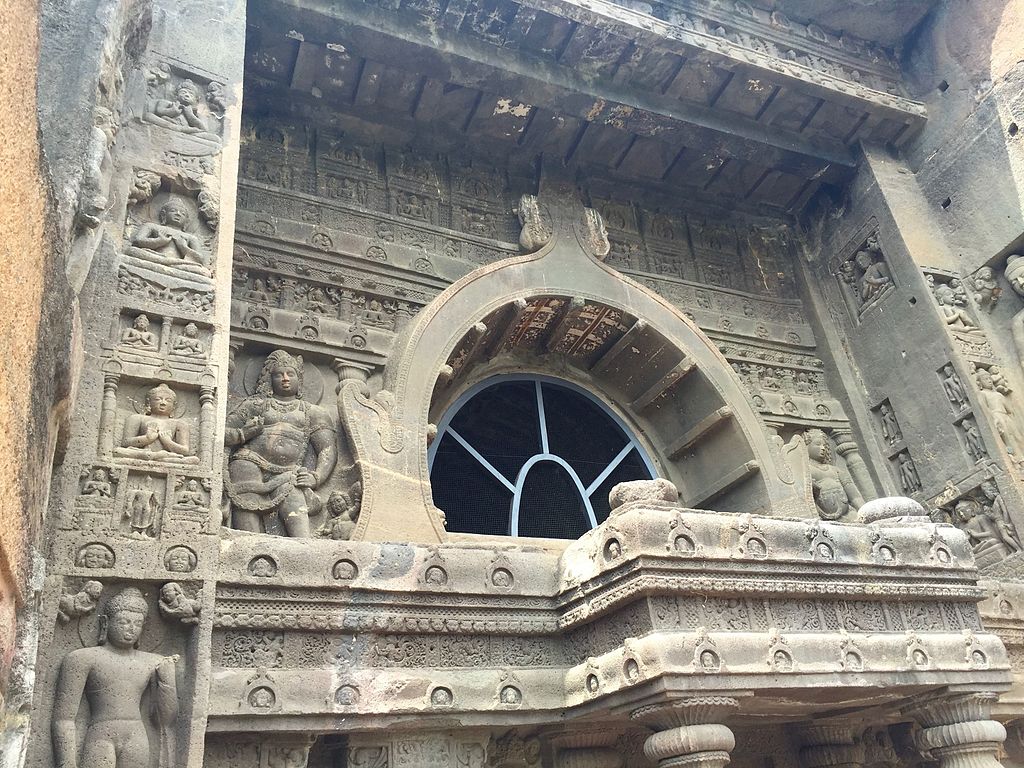
Headlines of Smith’s discovery quickly spread. In 1844, the Royal Asiatic Society appointed Major Robert Gill to develop recreations of wall paintings on canvas.
This was the beginning of measures to uncover and capture the religious halls (chaityagrihas) and shrines (viharas) that have been, after all, sculpted in 2 stages from solid rock, the first-five prayer halls-between the 1st and 2nd centuries BC, and the second-25 monasteries, or the lodgings of monks-in the 5th century AD.
YOU MAY ALSO LIKE: Kailash Temple, a 1200 years old Hindu temple, carved from a single rock in Ellora
Gill was working amid truly daunting circumstances. It was not only sometimes blisteringly hot, however, but it was also a tiger land, and the furious Bhil people, whether Hindu or Mogul emperors or British military men of the 19th century, had never come to peace with intruders.

